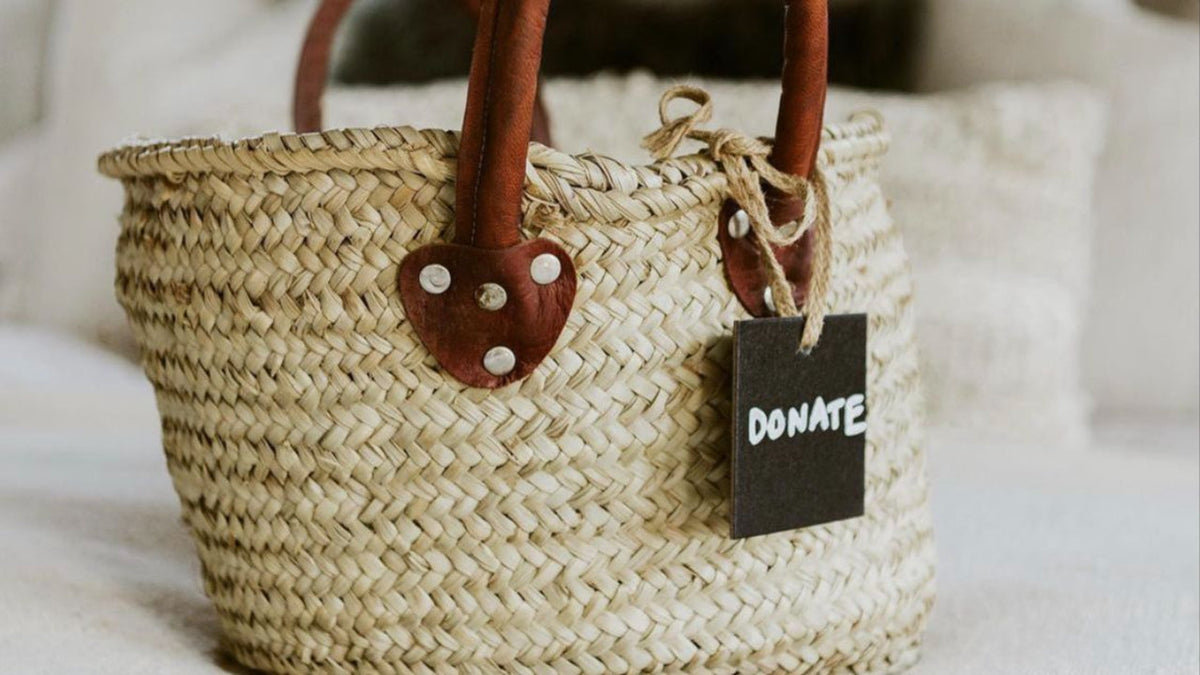

Letting go of clutter is more than just clearing out physical space; it's an emotional and psychological journey. Many people feel overwhelmed by the process, often experiencing anxiety, guilt, or a sense of loss.
This is normal. But when a trusted person gives us permission to let go, the process becomes easier. This is because we often seek external validation and comfort in shared decision-making.
The Role of Trust in Decluttering
Trust helps by reducing anxiety.
Trust is crucial in helping us let go of sentimental items or things tied to unfulfilled dreams. When someone we trust, like a friend, family member, or professional organizer, supports our decision and gives us a little encouragement to discard or donate an item, it eases our mental burden. This trust reduces the anxiety of wondering if we're making the right choice, tapping into our need for social approval and making it easier to let go.
Permission and the Release of Guilt
It's a psychological release.
We often hold onto items out of guilt, whether because they were gifts or investments of our time and money. Permission from a trusted person helps us reframe these feelings, shifting from guilt to acceptance. This psychological release makes it easier to part with items without feeling like we are dishonoring the past.

Shared Decision-Making and External Validation
You'll have better outcomes.
Research shows that shared decision-making leads to better outcomes because it offers a "reality check" that helps overcome emotional attachment to clutter. Having someone by our side who validates our choices activates our brain’s reward centers, making us feel good about letting go.
Conclusion: Embrace the Power of Permission
Reach out to someone you trust!
Letting go of clutter isn’t just about organizing; it's about emotional freedom. A trusted person’s permission can provide the support needed to make confident decisions, helping create a space that reflects who you are today. When you struggle to part with an item, reach out to someone you trust—their validation might be the key to a clutter-free, more peaceful life.
If you’re looking for your trusted person, I can help. Be sure to keep up-to-date on my Instagram for more tips, download my freebies and browse through my courses where I will give you permission to let go every step of the way.
Shop Simplified's How-To Guides
"Letting go of clutter isn’t just about making space in your home—it’s about creating emotional freedom. When someone we trust gives us permission to release what no longer serves us, we gain the confidence to let go and embrace the present. It’s not just about organizing; it’s about reclaiming your life, one decision at a time." —Megan Golightly
Steps to Follow
- Choose Your Decluttering Partner: Decide who will help you in this process—someone whose judgment you trust and who can provide the reassurance you need.
- Plan Your Session: Set a specific time and place to start. Gather any materials you might need, like boxes for donations, a trash bag, or a digital camera to capture memories before parting with items.
- Communicate Your Goals: Clearly explain to your trusted person why you want to declutter and what kind of support you need. Be open about your emotional attachments and any hesitations you might have.
- Sort Items into Categories: Begin by sorting items into categories: Keep, Donate, Trash, and Unsure. Allow your trusted person to help guide these decisions by asking questions like, “Does this still serve you?” or “How does this item fit into your life now?”
- Ask for Permission to Let Go: When you struggle with a decision, verbalize your hesitation and allow your trusted person to give you permission. This external validation often makes it easier to part with things.
- Reflect and Celebrate Progress: At the end of the session, take a moment to reflect on what you’ve accomplished. Celebrate the items you’ve let go of and appreciate the space you’ve created, both physically and mentally.
- Maintain Momentum: Decluttering is an ongoing journey. Schedule regular check-ins with your trusted person to maintain progress and address any new emotional attachments that might arise.


⚡⚡ Pro-tips
Identify Your Trusted Person: Choose someone who understands your emotional connection to your belongings and can offer non-judgmental support. This could be a friend, family member, or a professional organizer.
Set Clear Intentions Together: Before you begin decluttering, discuss your goals with your trusted person. Are you aiming to clear space, reduce anxiety, or simply feel more in control? Clear intentions help guide decisions and keep the process focused.
Start Small: Begin with less sentimental items to build momentum. This approach helps ease into the decluttering process without feeling overwhelmed by deep emotional ties.
Use the “Permission Phrase”: Create a simple permission phrase that resonates, like “It’s okay to let this go,” or “You don’t need this to remember.” Have your trusted person repeat this when you struggle to decide.
Take Breaks and Reflect: Decluttering can be emotionally exhausting. Plan short breaks to reflect on the progress made, celebrate small wins, and acknowledge any feelings that arise.
Create a Let-Go Ritual: Establish a small ritual when letting go of particularly sentimental items. This could be as simple as taking a photo, writing a short note, or sharing a memory before saying goodbye to the item.
Establish Boundaries with Sentimental Keepsakes: If certain items are too hard to let go of, place them in a “maybe” box. Revisit this box in a month with your trusted person and reassess whether you’re ready to let go.
Shop Simplified's Amazon Stores






